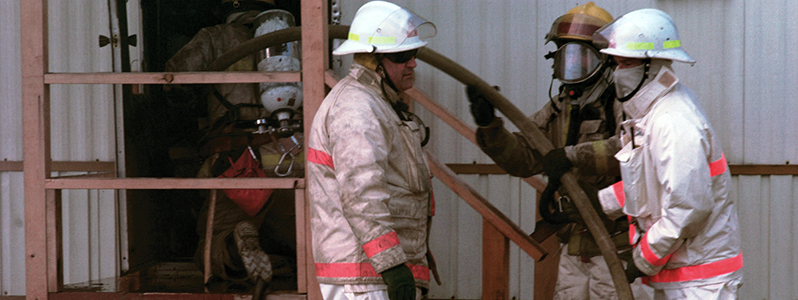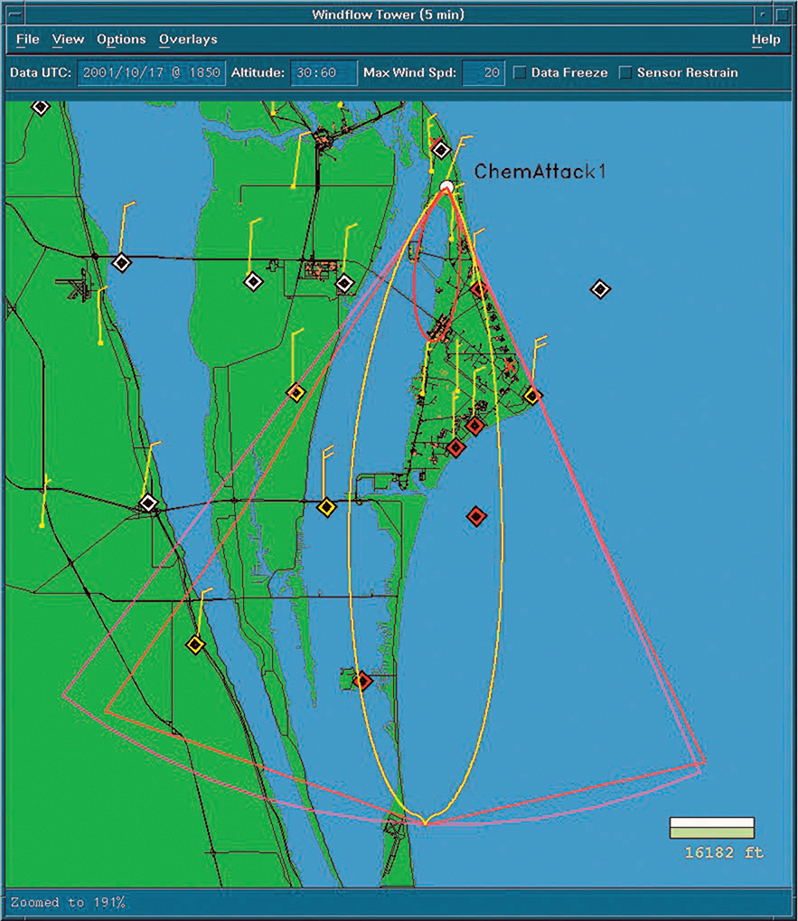
Safety on Earth From MARSS
Quick detection and accurate monitoring can help prevent dangerous weather conditions and chemical spills from becoming lethal. ENSCO, Inc., of Springfield, Virginia, created a system that not only detects and monitors, but also provides mock scenarios to guide preparations for emergencies involving meteorological hazards and toxic substances.
ENSCO has been developing the Meteorological and Atmospheric Real-time Safety Support (MARSS) concept since the early 1980s, in partnership with NASAs Kennedy Space Center and the U.S. Air Force. Developed under a Phase III Small Business Innovation Research (SBIR) contract with Kennedy, MARSS is a full-color graphics system specifically designed for real-time assessment of meteorological data displays and toxic material spills. The system was originally designed to measure the safey of NASA and Air Force range safety personnel while performing weather sensitive operations around launch pads.
Severe weather can injure personnel, damage equipment, and possibly destroy space vehicles and payloads. Due to the weather's effect on most of Kennedy's operations, MARSS augments a ground operations safety plan that limits certain work operations and procedures to very specific weather conditions. For example, MARSS will notify personnel of occurring or imminent lightning within 5 miles of operations, which would necessitate a halt to certain activities like outdoor crane hoisting.
In addition to monitoring severe weather conditions, MARSS provides toxic hazard prediction models to assist safety managers in planning for and reacting to releases of hazardous materials, such as those associated with launch vehicles. Prior to a launch, forecasting and modeling capabilities enable users to run mock scenarios to predict blast and toxic parameters. This allows managers to characterize the nature and scope of launch-related dangers, as well as to plan procedures in the event of a chemical accident.
MARSS works by acquiring real-time meteorological data from a network of surface, upper-air, and lightning sensors. This data, along with a database specifying which chemicals are stored at each location, is integrated into a single application environment for chemical hazard predictions and continuous atmospheric hazard monitoring. When atmospheric conditions violate user-specified criteria, the MARSS monitoring function alerts personnel through audio/visual alarms, e-mail, or alphanumeric paging. The monitoring and display features provide users with the ability to detect fast-moving, hazardous weather conditions and initiate protective action to avoid injury to personnel and damage to critical assets. By generating models that indicate the atmospheric location of toxic and hazardous plumes, MARSS provides real-time information to decision-makers for evacuation and property protection.
MARSS can be used in agricultural, industrial, and scientific applications that require weather forecasts and predictions of toxic smoke movement. In 1998, the MARSS system aided firefighters battling Florida's drought-induced wildfires. ENSCO installed a MARSS unit at the Brevard County Agricultural Center in Cocoa, Florida, to provide real-time fire threat data to firefighters. The system's displays and monitoring capabilities alerted firefighters when lightning activity threatened to ignite additional fires, and indicated when wind conditions would affect the large number of fires burning over the area. MARSS is also designed to protect urban areas, seaports, rail facilities, and airports from direct/indirect airborne releases of hazardous chemical substances. The system can integrate with local facility protection units and provide instant threat detection and assessment data that is reportable for local and national distribution. In the event of an incident, the continuous graphic display of plume movement allows for enhanced communication between safety personnel and related agencies. With the need for advances in homeland security, ENSCO is looking at expanding the MARSS capabilities to provide for civil and Department of Defense detection and warning of chemical and biological attack.
Several units of the MARSS system are currently deployed at Kennedy and Cape Canaveral Air Force Station, Florida. The system is now commercially available, with its first contract to Lockheed Martin as a weather toxic support system for the Eastern and Western Range, which refers to the 45th and 30th Space Wing, respectively. The U.S. Air Force awarded ENSCO a contract to produce and install the next generation of MARSS for the Cape Canaveral and Vandenberg Air Force Base space launch ranges.

MARSS’ toxic hazard prediction models help safety managers plan and react to the release of hazardous materials.

ENSCO’s MARSS system was used during the 1998 wildfire emergency affecting much of Florida.













